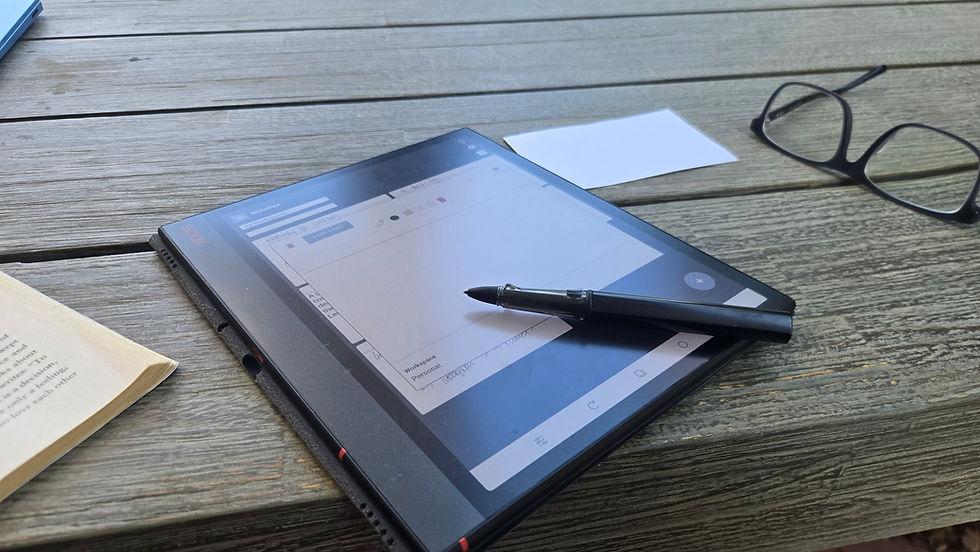Simple Note-Taking Methods That Work
- Prem Sundaram

- 5 days ago
- 4 min read
Taking notes effectively is a skill that can transform how you learn, work, and organize your thoughts. Whether you are a student, professional, or lifelong learner, mastering simple note-taking methods can help you retain information better and stay organized. This article explores some basic note-taking ideas that are easy to implement and proven to work.
Basic Note-Taking Ideas to Boost Your Productivity
When it comes to note-taking, simplicity is key. You don’t need complicated systems or expensive tools to capture important information. Here are some basic note-taking ideas that anyone can use:
Use bullet points: Bullet points help break down information into digestible pieces. They make your notes easier to scan and review later.
Highlight key terms: Use a highlighter or underline important words and phrases to make them stand out.
Write in your own words: Paraphrasing helps you understand and remember the material better.
Keep notes organized: Use headings, subheadings, and numbering to structure your notes logically.
Review and revise: Go over your notes regularly to reinforce learning and fill in any gaps.
These simple strategies can make your note-taking more effective and less overwhelming.

Different Note-Taking Methods You Can Try
There are several popular note-taking methods, each with its own strengths. Choosing the right one depends on your personal preferences and the type of information you need to capture.
1. The Cornell Method
This method divides your page into three sections: a narrow left column for keywords or questions, a larger right column for detailed notes, and a summary section at the bottom. It encourages active engagement by prompting you to review and summarize your notes.
2. Mind Mapping
Mind maps are visual diagrams that connect ideas around a central topic. This method is great for brainstorming and seeing relationships between concepts.
3. Outline Method
The outline method uses indentation and bullet points to organize information hierarchically. It works well for structured lectures or reading materials.
4. Charting Method
This method involves creating tables to compare and contrast information. It’s useful for subjects with lots of data or categories.
5. Sentence Method
Simply write every new thought or fact on a separate line. This method is fast but can be harder to review later without organization.
Experiment with these methods to find what suits your style best. You can also combine elements from different methods to create a personalized system.

What are the 7 Rules of Note-Taking?
To maximize the effectiveness of your notes, consider these seven essential rules:
Be concise: Write only what is necessary to understand the concept.
Use abbreviations and symbols: Develop your own shorthand to speed up writing.
Focus on main ideas: Avoid copying everything verbatim; prioritize key points.
Use visuals: Diagrams, charts, and drawings can clarify complex information.
Stay organized: Date your notes and keep them in a dedicated notebook or digital folder.
Review regularly: Revisiting notes helps transfer information to long-term memory.
Be consistent: Stick to one or two note-taking methods to build a habit.
Following these rules will help you create notes that are clear, useful, and easy to study.

Tips for Digital Note-Taking
In today’s digital world, many people prefer taking notes on their devices. Digital note-taking offers several advantages:
Searchability: Quickly find keywords or topics in your notes.
Cloud storage: Access your notes from anywhere and back them up automatically.
Multimedia integration: Add images, audio, and links to enrich your notes.
Easy editing: Rearrange, delete, or add content without messy erasing.
Popular apps like Evernote, OneNote, and Notedex provide user-friendly interfaces for capturing and organizing notes. For those who want to keep it simple, simple note taking apps can be a great choice to streamline the process.
When using digital tools, remember to:
Use consistent file naming and tagging.
Sync your notes across devices.
Regularly back up your data.
Combine typed notes with handwritten input if your device supports it.
How to Make Your Notes Work for You
Taking notes is only half the battle. To truly benefit, you need to use your notes effectively:
Review soon after class or meeting: This helps reinforce what you learned.
Summarize key points: Write a brief summary at the end of your notes.
Create flashcards: Turn important facts or definitions into flashcards for quick review.
Teach someone else: Explaining concepts aloud helps deepen your understanding.
Use notes for projects and exams: Refer back to your notes when preparing assignments or studying.
By actively engaging with your notes, you turn passive information into knowledge you can apply.
Mastering basic note-taking ideas can improve your learning and productivity significantly. Whether you prefer pen and paper or digital tools, the key is to keep your system simple, organized, and consistent. Start experimenting with these methods today and discover which ones help you capture and retain information best.



